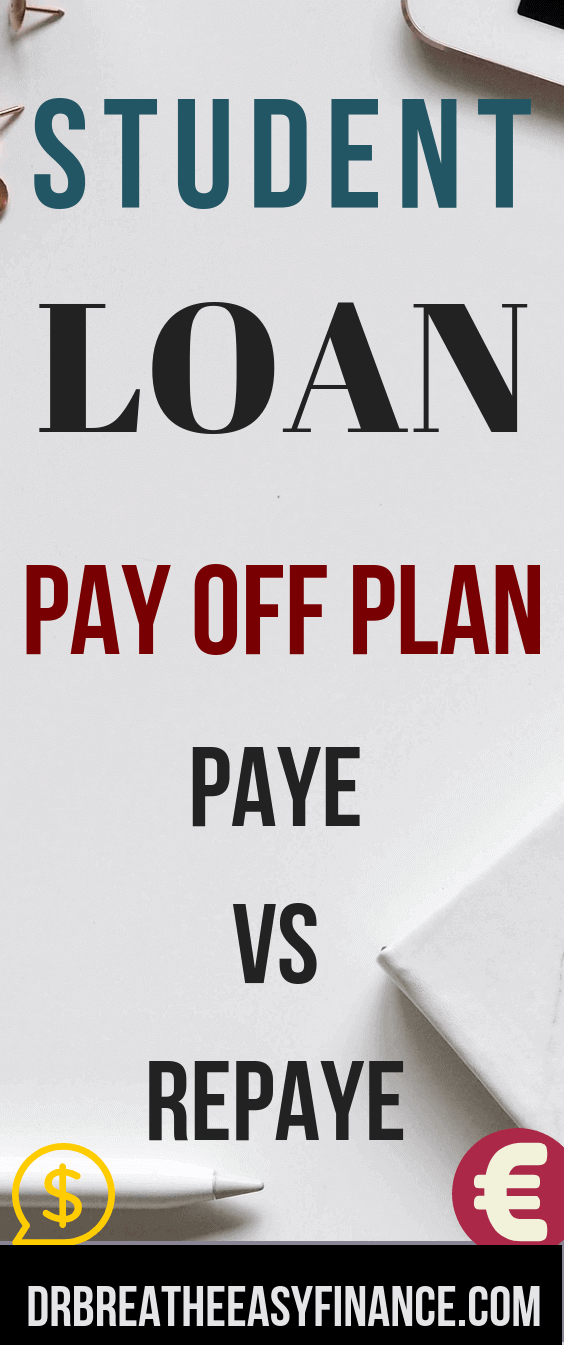You have just completed your bachelor’s degree and you are in search of a job post-college. You’re excited to get started in the workforce until you get a letter in the mail showing you now have an outrageous payment due for your $50,000 in student loans.
How are you going to pay your loans if you don’t even have a job yet? Perhaps you do have a job that got you through college paying rent and basic living expenses, but that was before you graduated and that job pays next to nothing.
In a physician’s case, it is even worse. The scenario goes like this.
You just completed medical school and you are hustling for residency interviews. You finally matched into your specialty choice. You’re excited to get started as the new “doctor in training” saving lives left, right and center.
You even imagined yourself as the intern of the year already; oh the accolades. .. until you get a letter in the mail telling you to cough out money to service your $250,000 student loan.
You can read more about my student loan debt and some techniques I used to pay it off here.
Thankfully, there is a solution to this scenario that was introduced back on December 21st, 2012 by then President Obama. It’s called the PAYE or “Pay as You Earn” program.
This gave students a way to make payments based on their income, and even qualify for loan forgiveness after a certain amount of time making payments.
PAYE, however, was restricted to loans on or after October 1st, 2007 for new borrowers.
As this presented a small dilemma for many borrowers, a new program was introduced in addition to PAYE. It’s called the REPAYE, or “Revised Pay as You Earn” program.
Table of Contents
What are the differences between PAYE and REPAYE? Is one better than the other? And, what are the pros and cons of each?

Here’s a quick breakdown of the answers to these very common questions.
What Is PAYE and REPAYE?
As student loans rise higher than the overall credit card debt and auto loans, a clear potential problem could be on the horizons; what if students can’t afford to repay their student loans as new graduates searching for jobs or just entering their first entry-level position?
Well, the government had to come up with a solution.
Among the myriads of repayment plans aimed at helping graduates from college repay their debt, are the PAYE and REPAYE plans.
Each is student loan repayment plans that benefit students seeking to lower their payments, pay less in interest, or qualify for government subsidy in paying back their loan balance.
What is PAYE and how does it work?
PAYE stands for “Pay As You Earn”. It allows new graduates to pay back their student loans based on their current income.
More specifically, it used your discretionary income, or the leftover money after basic living expenses, to determine how much you can afford to pay on your student loans.
Some benefits of the PAYE student loan program are:
- Payments are based on current income, not your loan balance.
- Payments won’t exceed 10% of your discretionary income
- After 20 years of qualified payments, your loans may qualify for forgiveness (however the forgiven amount is taxable)
- Loans that qualify have to be from new borrowers on or after October 1, 2017.
How to qualify for PAYE
Qualifying for PAYE only has a few requirements to be aware of. If you do not qualify for PAYE, your next option is to apply for REPAYE, as they generally have less strict guidelines. Among the qualifications needed for PAYE are:
- Qualify for at least “Partial Financial Hardship”
- Federal Student Aid defines partial financial hardship as:
“The annual amount due on your eligible loans, as calculated under a 10-year Standard Repayment Plan, exceeds 10 percent of the difference between your adjusted gross income (AGI) and 150 percent of the poverty line for your family size in the state where you live.”
- Federal Student Aid defines partial financial hardship as:
- Must be a new borrower on or after October 1st, 2007. If you have a direct loan before this date, you are ineligible and should look at REPAYE.
- Applicants must have received a direct loan disbursement on or after October 1st, 2011.
What types of loans qualify for PAYE?
Eligible loans that may qualify for PAYE include:
- Direct subsidized loans
- Direct unsubsidized loans
- Direct PLUS Loans made to graduate or professional students
- Direct Consolidation Loans that did not repay any PLUS loans made to parents
- Most other loans are either not eligible or only eligible if consolidated. For a complete list of qualifying federal loans, visit Student Aid.
Keep in mind that these loans must be Federal Student loans, not private student loans as they do not qualify.
What is REPAYE and how does it work?
REPAYE stands for “Revised Pay As You Earn” program. It was introduced as a plan for those types of loans that don’t meet all the requirements for the PAYE program, such as borrowers who received loans before October 1st, 2007, for example.
The plan allows new college graduates entering the workforce to apply for an income-based student loan repayment plan, just like PAYE (with a few minor changes).
Your student loans are based on your income and will not exceed 10% of what you make. Those who qualify for REPAYE can have their student loans forgiven after 20 or 25 years of qualified repayments, depending on whether the loans are for graduate studies or undergraduate studies.
Another common obstacle that applicants to the PAYE plan come across is the ability to prove that they don’t make enough money to qualify for PAYE.
REPAYE removes that hurdle so that regardless of how much money you make, you can still qualify for your payments to never be more than just 10% of your discretionary income.
Furthermore, the REPAYE plan offers a 3-year period where the government will pay accrued interest for subsidized loans.
After the 3 years, the government will pay half the accruing interest for both subsidized and unsubsidized loans.
Some of the differences between the REPAYE program that differ from the PAYE program are:
- PAYE requires that eligible participants can’t have any outstanding loans before October 1, 2007. This is removed in the REPAYE program.
- The PAYE program allows you to receive loan forgiveness regardless of whether it was for undergrad, graduate school or both, after just 20 years. REPAYE If you take out any loans for grad school, all your loans will be forgiven after 25 years. If you only have undergraduate loans, then the same 20-year forgiveness rules apply.
How to qualify for REPAYE
Anyone with federal student loans can qualify to make payments on their loans under REPAYE. Qualified federal student loans include:
- Direct subsidized loans
- Direct unsubsidized loans
- Direct PLUS Loans made to graduate or professional students
- Direct Consolidation Loans that did not repay any PLUS loans made to parents
- Most other loans are either not eligible or only eligible if consolidated. For a complete list of qualifying federal loans, visit Student Aid site.
The Pros & Cons of PAYE & REPAYE
Each repayment plan offers pro’s and con’s for different scenarios, and thus cater to different people. Below is a comparison table along with a list of potential scenarios of the types of people that would benefit from each:
| PAYE | ||
| Pros | Cons | Those who will benefit most: |
| · Loan forgiveness after 20 years of qualified payments
· Your payment will be based on your own income alone if you file single or married filing separately. · Generally, a much lower monthly payment. · The max amount you will pay is up to 10% of your original loan balance, regardless of your current income (even if it increases significantly). |
· Must show at least partial financial hardship in order to qualify
· The government pays 100% interest for just the first 3 years, where REPAYE offers this plus 50% paid interest after 3 years. |
· Those that work in public service occupations qualify to receive forgiveness after just 120 payments.
· Those who borrowed money within the said qualifying dates. |
| REPAYE | ||
| Pros | Cons | Those who will benefit most: |
| · No contingency dates on which loans qualify. Anyone who has federal student loans may be eligible.
· The government will pay 100% of your accrued interest during the first 3 years, and 50% of accrued interest thereafter. |
· When applying, both you and your spouse’s income counts in calculating your repayment. Thus, your payments will most likely be higher.
· The payments are dependent on your income and will increase as your income increases. |
· Those who don’t qualify for PAYE plan.
· Those who wish to pay less in accrued loan interest over the life of the loan. |
Which is the best option for you?
By now you should be able to at least get a good idea of which path best fits your current situation.
You can use this estimator to see which repayment program works out best for you.
Each option has great choices and benefits, and each has its downsides. Things to consider when deciding which option is best for you are:
- Are you looking to lower your payments or lower the amount you pay in interest?
- Are you a current worker in a government service occupation that may qualify for quicker loan forgiveness?
- What is the main reason you are seeking help with your loan payments? Is it due to financial hardship, lack of a sufficient paying job, or simply trying to maximize your finances by paying little in interest?
The answers to these questions will help aid you in deciding where to start and which loan repayment options may be a good fit for you. Other similar types of repayment plans to consider along with PAYE and REPAYE are:
- Income-Based Repayment plan (IBR)
- Income-Contingent Repayment plan (ICR)
Each offers slightly different scenarios, pros, and cons than the PAYE or REPAYE plans.
Regardless of your scenario, if you’re a graduate with a mountain of student loan debt, chances are you can significantly lower your monthly payments, the amount you pay in interest, and/or even qualify for complete forgiveness.
I am a pulmonary and critical care doctor by day and personal finance blogger/debt slaying ninja by night.
After paying off close to $300,000 in student loan debt in less than 6 months into my real job, I started on a mission to help others achieve the same. There is no magic to this than to strap up and get it done. Some of the ways we achieved this include side hustle, budgeting, great negotiation skills, and geographical arbitrage.
When I was growing up, common knowledge in Nigeria is that there is one thing you cannot trust anyone else with, and you guessed it – your money.
Being frugal came easily to me based on my background. However, the concept of building wealth did not solidify in my mind until when I finished medical school. I wish I knew what I know now when I was 14. Still, I don’t know enough and I am constantly learning to improve my knowledge.
My goal is to reduce financial illiteracy among young professionals. I am catering to the beginners – babies and toddlers in financial literacy.








Leave a Reply